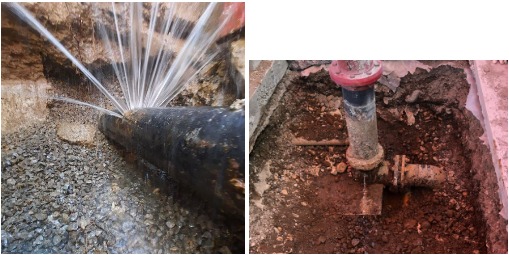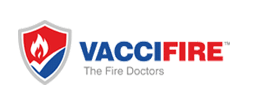Addressing Underground Fire Pipe Leaks: A Vital Concern

Addressing Underground Fire Pipe Leaks: A Vital Concern
Introduction
Many apartment buildings and industries that have stood for over 8-10 years are grappling with a persistent issue – underground fire pipe leaks. These leaks occur due to accelerated corrosion caused by soil and moisture surrounding the steel pipes. Not only do these leaks result in the wastage of a precious resource, but they can also lead to pump malfunctions and a shortage of water in case of a fire incident, potentially causing catastrophic consequences for building management committees.
Fire safety systems are a critical component of any building’s infrastructure, ensuring the safety of occupants and protecting valuable property from potential fire hazards. Underground fire pipes play a pivotal role in these systems, transporting water from the main supply to various points where it can be accessed during a fire emergency. However, the integrity of these pipes is compromised over time due to various environmental factors, leading to leaks that can undermine the entire fire safety framework.
Diagnosis
Identifying underground pipe leaks is crucial for timely intervention. One clear symptom is the frequent start-stop cycling of the Jockey pump, occurring at intervals of less than 6 hours, without any observable water usage. The Jockey pump is designed to maintain pressure in the fire protection piping system, and its excessive cycling can indicate a loss of pressure due to leaks. When there’s no visible evidence of leaks in above-ground pipes or equipment, it strongly suggests underground pipe leakage.
Regular inspections and maintenance are essential for diagnosing such issues early. Advanced diagnostic tools like pressure testing, acoustic monitoring, and infrared thermography can help detect leaks that are not visible to the naked eye. These methods enable facility managers to pinpoint the location of leaks more accurately, thus facilitating quicker and more effective repairs.
Locating and Repairing the Leakage
Detecting and addressing leaks in buried underground pipes pose significant challenges. They are not visible to the naked eye and may not be easily traceable even with professional ultrasound equipment. Underground pipes are often buried deep beneath the surface, making access difficult without extensive excavation. The presence of soil, rocks, and other materials can further complicate the detection process.
Once a leak is suspected, specialized equipment such as ground-penetrating radar (GPR) and leak detection dogs can be employed to locate the exact point of leakage. These methods, although more accurate, come with their own set of challenges and costs.
Furthermore, even if a leak is located, there’s a risk of additional leaks developing in the same pipe over time due to accelerated corrosion affecting the entire length of the buried pipe. Corrosion is exacerbated by the constant exposure of metal pipes to moisture and various chemicals present in the soil. This ongoing degradation means that fixing one leak does not guarantee the prevention of future leaks.
Repairing such leaks is often a temporary “band-aid” solution due to space constraints for proper welding operations. Additionally, the cost of excavation, including redoing flooring finishes, and the disruption caused to traffic during excavation can be prohibitive. Welding in confined underground spaces poses significant safety risks and often results in suboptimal repairs that may not hold up in the long term
The Solution
The most effective and long-term solution is to replace underground buried pipes with above-ground ones. This approach eliminates the need for extensive excavation of floors and avoids disruptions to traffic. By rerouting pipes above ground, maintenance becomes significantly easier and more cost-effective. Above-ground pipes are readily accessible for inspections, repairs, and replacements, reducing downtime and operational disruptions.
Moreover, the lifespan of an above-ground pipe far exceeds that of a buried one, ensuring a lasting investment of at least 20 years. It’s worth noting that the Mumbai Fire Brigade mandates external hydrant lines to be above ground to detect and prevent undetected leakages effectively. Above-ground installations allow for immediate identification of leaks and other issues, enabling prompt corrective actions.
Implementing this solution requires careful planning and coordination with building management, fire safety experts, and regulatory authorities. The transition from underground to above-ground piping must be meticulously executed to ensure compliance with safety standards and minimal disruption to building operations.
Expertise in Implementation
At Elixir Engineering Pvt Ltd, we pride ourselves on being a leader in the field of fire prevention systems and technical facility management. With over 25 years of experience, our expertise has allowed us to provide top-notch services from concept to commissioning and beyond. We understand the complexities involved in addressing underground fire pipe leaks and offer tailored solutions to meet the unique needs of each client.
Our subsidiary, Vaccifire, offers a comprehensive range of fire-related solutions such as maintenance, audits, training, and repairs. Our team of experts is equipped with the latest tools and technology to diagnose and resolve fire pipe issues efficiently. We ensure that all repairs and installations meet the highest standards of quality and safety.
In 2019, we further enhanced our commitment to providing convenient and environmentally friendly services with the launch of our cloud-based Fire app. This innovative platform allows clients to monitor and manage their fire safety systems in real-time, schedule maintenance, and access detailed reports from any location. The Fire app streamlines the process of maintaining fire safety systems, ensuring that potential issues are identified and addressed promptly.
Conclusion
Underground fire pipe leaks present a significant challenge to the integrity and reliability of fire safety systems in older buildings and industrial facilities. The corrosion of steel pipes due to soil and moisture can lead to frequent leaks, causing resource wastage, pump malfunctions, and inadequate water supply during fire emergencies. Diagnosing and repairing these leaks is a complex and costly process that often provides only temporary relief.
The most effective solution is to replace underground pipes with above-ground installations. This approach not only simplifies maintenance and reduces costs but also enhances the longevity and reliability of fire safety systems. At Elixir Engineering Pvt Ltd, we offer comprehensive services to help clients transition to above-ground piping and maintain robust fire safety systems.
For further information or assistance with this issue, please feel free to contact us.
